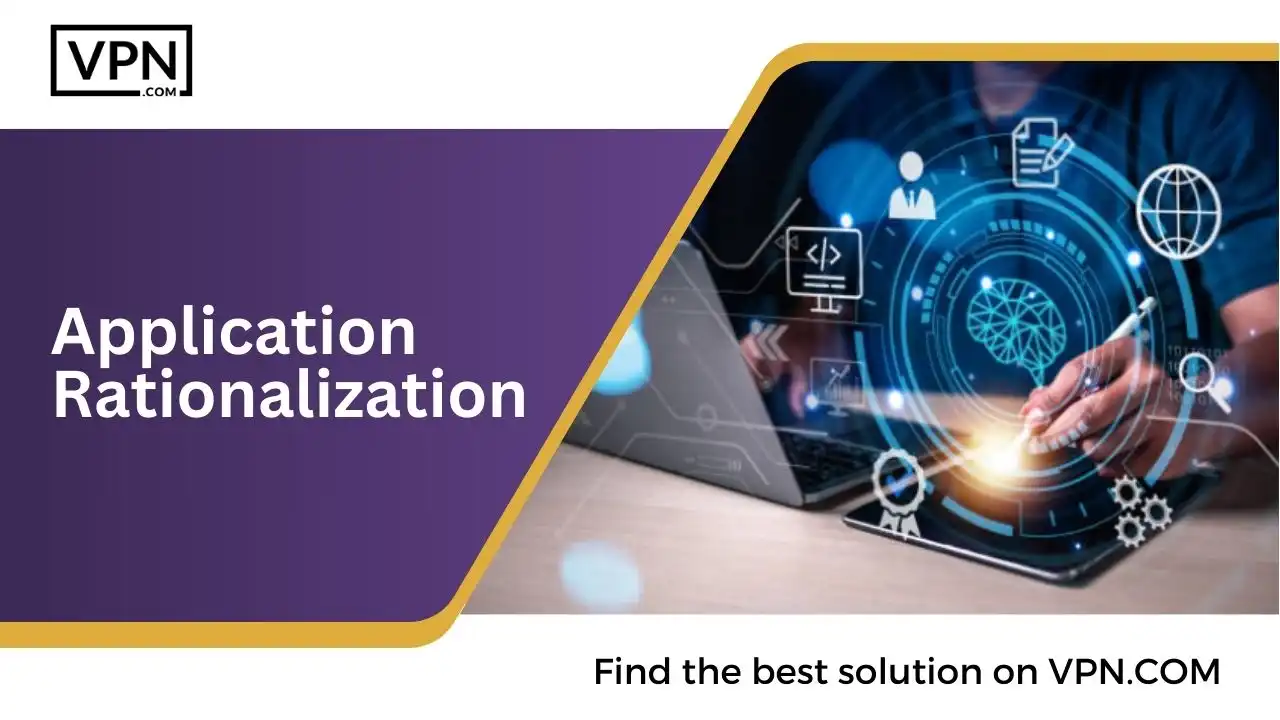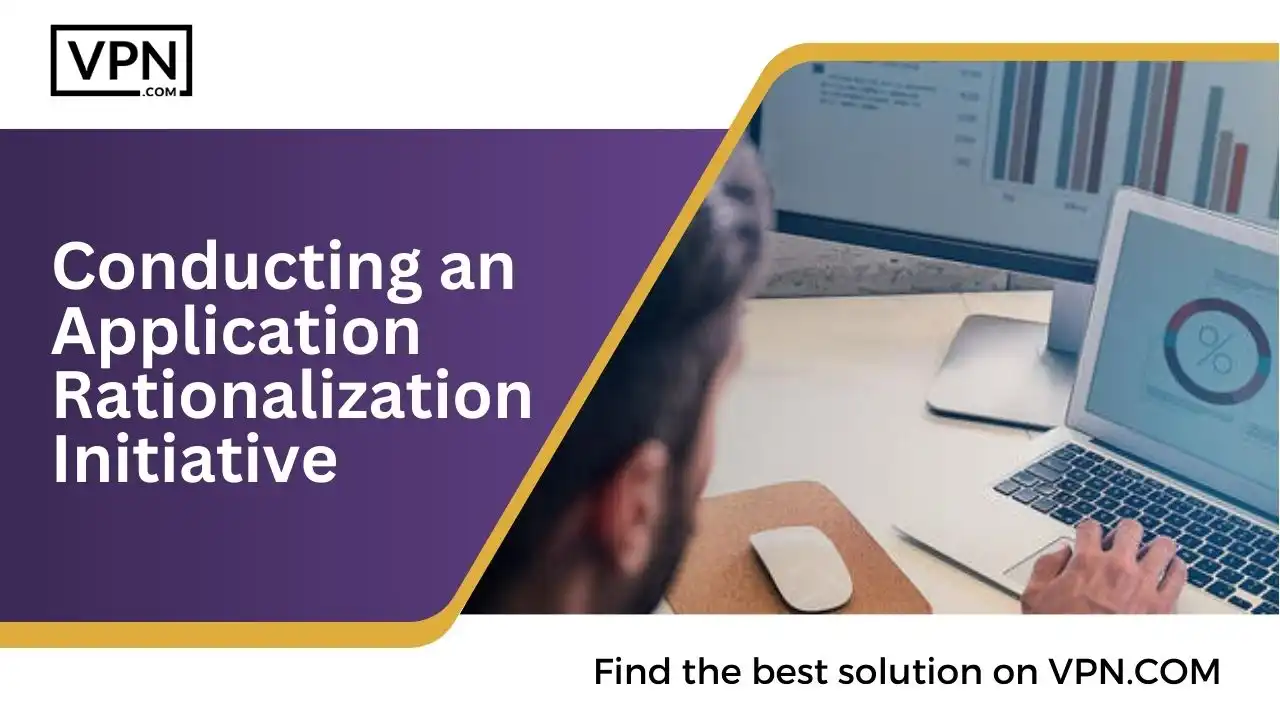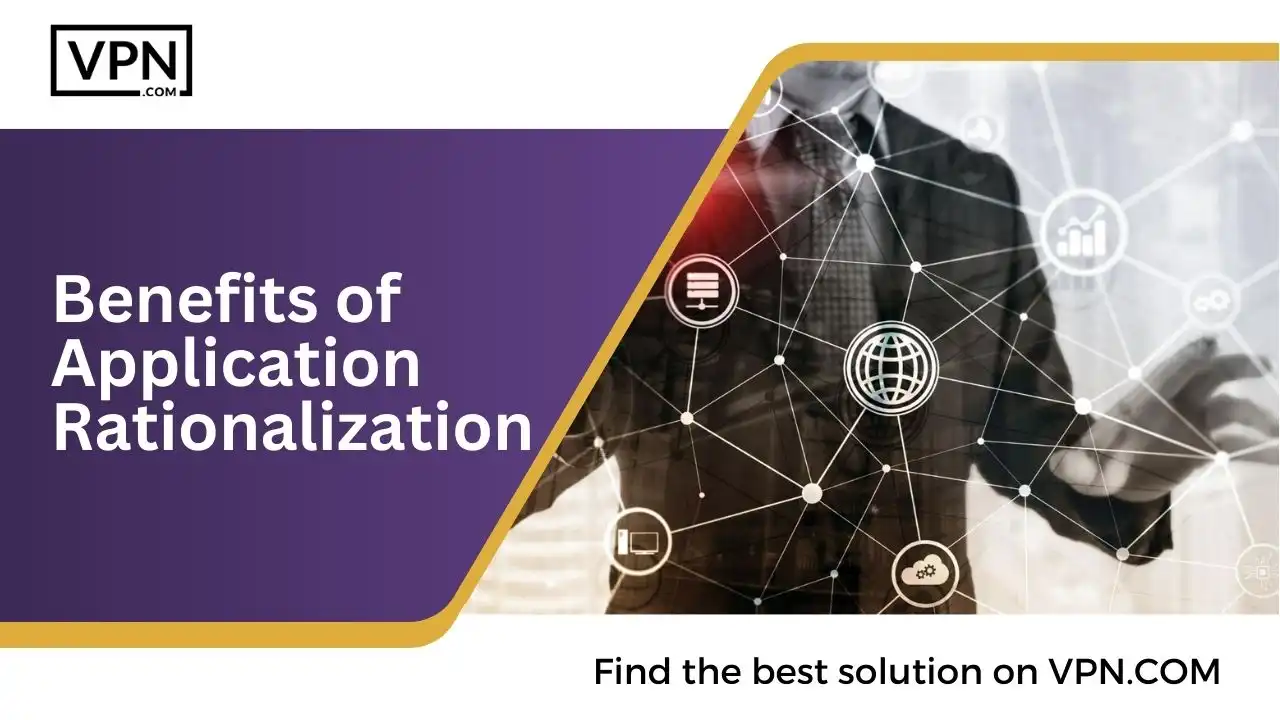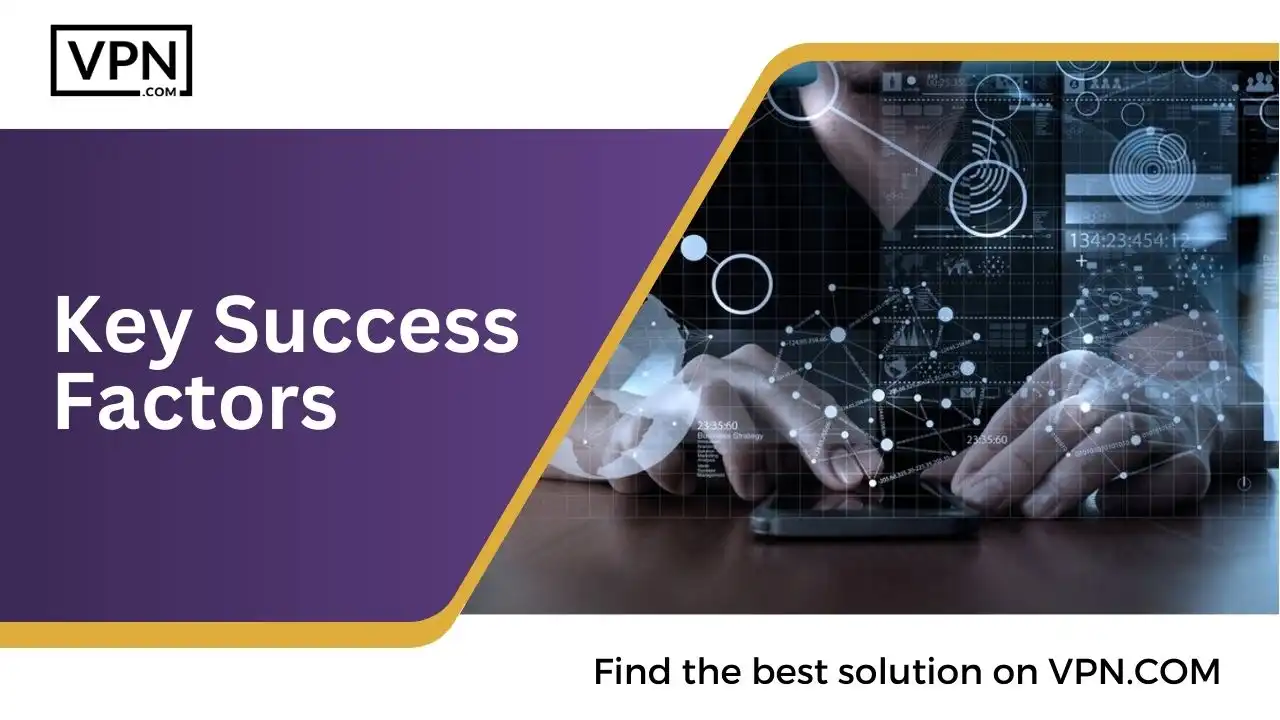Application Rationalization

Are you sick of unnecessary and outdated applications? A vast software portfolio can overload IT infrastructure, increase costs, and impede innovation. Well! Enterprises can convert this disadvantage into a benefit via tactical analysis and planning. Application rationalization can solve this problem by allowing businesses to identify and eradicate the software glut while aligning investments with ever-changing priorities.
This blog post is based on realistic steps to improve your portfolio, outlining viable models to enhance its value. Learn how to manage this task to support operations, improve security, and maximize resources to flourish in a highly dynamic digital world. This information and the best methods will help you to take control of your application ecosystem. But first, let’s learn what application rationalization is.
What is Application Rationalization?
Application rationalization is a tactical process of identifying and assessing all business applications used in a company to define an ideal application portfolio as per business needs. Major goals include decreasing costs by removing duplicate or unused applications, improving security by eliminating unsafe legacy systems, simplifying processes and infrastructures, and casting out resources to invest in innovative enterprises.
All-purpose coordination between IT, business units, and executives paves the path for the analysis of interlinkages, usage, costs, and value to categorize systems as reserve, replace, retire, or integrate.
Application rationalization provides technology and business leaders with insights into the application ecosystem to make data-directed portfolio decisions, allowing organizations to boost efficiency, cut expenses, manage risk, and focus investments to improve operations and competition continuously. Application rationalization aims to rightsize the portfolio to support the best-changing priorities and future demands.

Our #1 Rated Monitoring Service
- 24x7x365 multi-cloud security
- Security Assessment & Remeditation
- DevSecOps
- Cloud Disaster Recovery
Why is Application Rationalization Needed?

Application sprawl has led to redundant and complex systems that drain IT budgets on excessive licensing, hardware, and maintenance costs. At the same time, legacy applications pose growing cybersecurity risks. Application rationalization provides a strategic framework to cut expenses, manage risk, simplify infrastructure, and redirect resources toward innovation. Here is a further explanation.
Application Sprawl and Redundant Systems
Application sprawl means an uncontrolled expansion of applications within a company that leads to dismissal, ineffectiveness, and amplified costs. As departments get software independently, duplicate applications provide lap-strake functionality.
This overlapping inhibits the support and maintenance of IT resources. Application rationalization brings reductant systems to the fore so they can either be consolidated or eliminated.
High Maintenance Costs
The more extensive an application portfolio grows, the more resources are needed to maintain it, such as licensing, patching, upgrades, etc. Organizations can optimize budgets by eliminating redundant, dormant, or risky applications. Savings from application rationalization allow investment into innovation and growth initiatives.
Legacy Systems Posing Security Risks
Outdated applications often need more modern security capabilities like encryption, audit trails, role-based access, etc. They present weak points that can be exploited in cyber attacks. Replacing legacy systems through application rationalization reduces exposure to data breaches, financial fraud, and reputational damage.
Mergers and Acquisitions Leading to Duplicate Systems
Mergers and acquisitions give rise to accumulated applications in different business units that result in repetitive usage. This overlapping increases complexity and costs. Application rationalization focuses on integrating systems, simplifying infrastructure, and removing extra expenses.
Free Up Resources to Fund Innovation Initiatives
By rationalizing the application portfolio, organizations can reduce operational expenses and redirect funds towards developing new capabilities and emerging technologies crucial for competitiveness. Rightsizing applications enables agility to adapt to evolving business needs.
Conducting an Application Rationalization Initiative

A successful application rationalization initiative begins with a discovery phase to create an inventory of all business applications and capture vital metadata. This leads to an analysis phase assessing costs, usage, dependencies, and value to classify each application, prioritize rationalization decisions, and develop transition plans.
Discovery Phase
The discovery phase involves creating a comprehensive inventory of all business applications across the organization. This includes capturing critical metadata like costs, licensing terms, usage statistics, business value, technical specifications, dependencies, risks, and compliance status.
Thorough discovery provides the foundation to classify systems, identify redundancies, calculate total ownership costs, determine the applications’ alignment with business objectives, and classify each as retain, replace, retire, or consolidate during the subsequent analysis phase. Compiling accurate, up-to-date application data enables data-driven rationalization decisions.
Analysis Phase
In the analysis phase of the rationalization phase, the data gathered is assessed during discovery to classify applications and opt for rationalization decisions.
The basic steps are detecting unnecessary, outdated, or inactive systems so that they can be eliminated; assessing integration touchpoints and reliance between applications; calculating the overall expense of ownership of all systems on the basis of workforce expense, licensing, and infrastructure; and identifying the prevailing and future value of each application according to the goals of the organization.
Companies can make data-directed roadmaps to preserve, replace, retire, or integrate applications to improve their portfolio by emphasizing systems on the basis of risks, costs, and tactical effects.
Decision Phase
Based on the earlier analysis, the decision phase involves classifying each application as retain, replace, retire, or consolidate. The goal is to rationalize the portfolio and align it with business objectives while optimizing costs. Applications are arranged for migration or sunsetting according to usage, costs, risks, and strategic impact.
Concrete roadmaps are then developed detailing the timeline, resources, and interdependencies in transitioning applications. Setting direction through decisive planning empowers organizations to methodically transform their portfolio over time through application changes or replacements to best meet evolving needs.
Benefits of Application Rationalization

By streamlining the application portfolio, companies can reduce IT costs by 25-80% and divert those funds to be used for creative initiatives. A simple setting also decreases the security risks, infrastructure complications, and administrative work while allowing migration to the latest platforms such as the cloud. We will discuss these benefits in detail in this section.
Reduce Licensing, Hardware, Maintenance Costs
Eliminating redundant, outdated, and unused applications through rationalization reduces associated licensing fees, hardware expenses, and maintenance costs for patching and upgrades. Studies show savings between 25-80%. IT budgets shift from “keeping lights on” to funding innovation and growth.
Improve Security by Retiring Risky Applications
Legacy applications often lack modern security capabilities, presenting vulnerabilities to cyber threats. Replacing them reduces exposure to attacks. Fewer systems also mean less complexity and interdependencies, minimizing potential impact if a technology/application is compromised.
Simplify Infrastructure and Processes
Simplifying and eliminating applications decreases consolidation, reliance, and the risk of change. Rationalization promotes faster, more alert decisions on improving or adopting the latest technologies to manifest business goals. The simplicity that comes as a result of this strategy leads to process enhancement.
Free Up Resources to Fund Innovation
The cost savings and productivity improvements from rationalization allow IT budgets to shift from “keeping lights on” to developing new capabilities that boost competitiveness. A streamlined, efficient application portfolio provides promptness to continuously realign with changing business needs.
Enable Migration to Modern Platforms
Rightsizing applications establish the foundation to transition from costly legacy systems to modern platforms like cloud and SaaS models, providing scalability and lower TCO. Rationalization is critical to fully leveraging these emerging technologies.
Key Success Factors

Management support, coordination, definite goals, constant process optimization, and digital analysis are important for successful application rationalization. With applied together, these features promote organizational strategy, data-directed decisions, liability, and adaptivity to enhance the application portfolio. Here is the further explanation of all these factors.
Executive Sponsorship
Successful application rationalization requires an executive sponsor to promote the initiative, provide strategic guidance, make critical decisions, and secure funding. The sponsor’s authority enables them to align business and IT priorities while their influence rallies support across the organization. They empower the working teams and ensure accountability.
Cross-Functional Coordination
Application rationalization affects multiple departments, so input and collaboration are needed from IT, business units, and end-users. Cross-functional working groups provide diverse insights to inform decisions. Coordination also aids transparency and buy-in. Strong governance and communication channels help navigate competing interests.
Clear Goals and Timelines
Well-defined goals, scope, metrics, and timelines maintain focus and accountability throughout a continual rationalization process. They enable progress tracking and course corrections. Strict deadlines drive momentum when roadblocks emerge. Explicit objectives facilitate decision-making as various application dispositions are weighed.
Continuous Process Improvements
One-off rationalization initiatives often fail to achieve long-term gains. Continuous, incremental discovery, analysis, and planning improvements sustain efficiency. Automation and metrics fuel a feedback loop for ongoing optimizations. Regular re-evaluations accommodate changes in technology and business needs.
Automation of Discovery and Analysis
Manual data collection and assessments do not scale. Automated discovery and centralized repositories streamline baseline documentation and provide real-time visibility into interdependencies and costs. Seamless analysis enables responsive decisions. Integrations with EA tools enhance data-driven rationalization.

Our #1 Rated Monitoring Service
- 24x7x365 multi-cloud security
- Security Assessment & Remeditation
- DevSecOps
- Cloud Disaster Recovery
Conclusion
To sum up. We can say as digital evolution increases with time, application sprawl has given rise to increased costs, outdated codes, and overlapped systems that burden enterprises. Application rationalization gives a strategic plan to convert this disadvantage into a benefit by constantly optimizing technology investments.
Companies that prioritize application rationalization will get the sleight and quality required to align with the ever-changing demands. They enable investors to promote and unleash confined value with previous portfolios.
Technology enthusiasts can master cutting expenses and complexity to improve productivity and marketability with strategic steps. So, the right time to optimize the portfolio is now, not only for quick returns but also for establishing the foundation for lasting financial success.




